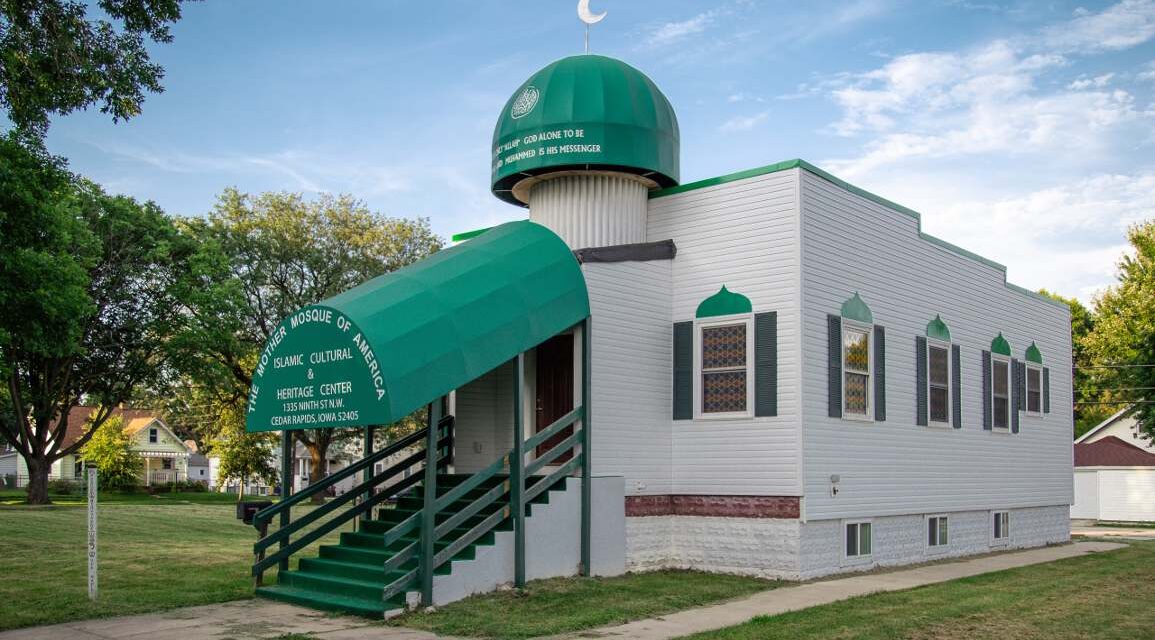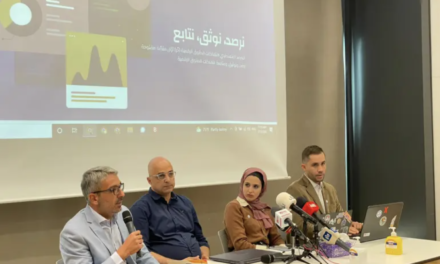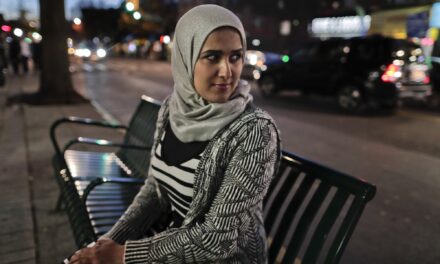Jav Ducker/Little Village
In early July 2020, Turkey’s supreme court issued a verdict to revert the Hagia Sophia in Istanbul into a mosque. The 1,500-year-old structure was built during the Byzantine Empire in the Greek Orthodox tradition, and served as a church until the rise of the Ottoman Empire, when it was first converted into a mosque. With the fall of the Empire in 1922, the mosque was turned into a museum; a century later, it has reopened as a place of worship.
Like this ancient mosque half a world away, the Mother Mosque of America in Cedar Rapids has undergone a number of identity shifts in its history. Built in 1934 by Greater Syrian immigrants (from modern-day Syria and Lebanon, in the former Ottoman Empire), the mostly wooden, almost schoolhouse-like building at 1335 9th St NW was sold in the early 1970s after a larger mosque was built in town. Over the years, it served as a center for Cambodian refugees, a social club for local youth and a church, until 1992, when the Islamic Council of Iowa purchased the building and restored its status as a mosque.
Unlike the Hagia Sophia, the Mother Mosque originated as a mosque. In fact, it was the first building designed and constructed specifically as a house of worship for Muslim Americans, and is the nation’s longest standing mosque built for that purpose. It was added to the National Register of Historic Places in 1996, representing “a vital starting point for the development of Islam as an established religion within the United States” and “symboliz[ing] tolerance and acceptance of Islam and Muslims” in America.
Today, approximately 50 people can offer prayer in the building at a time. The mosque administration has also purchased an adjacent 95-square-foot plot of land to construct a research center and provide other relevant services for community members and visitors, according to Imam Taha Tawil.
On a recent visit to the Mother Mosque, the two features I found most striking were its stained glass windows and dome. These are the only visual features setting the mosque apart from the rest of the houses in the quiet neighborhood. They are also evidence of the the fact the Mother Mosque was built to serve Muslim worshippers.
The stained glass windows look very traditional and beautiful, not so different from those in Christian churches. But the mehrab at the top of these windows is distinctive of a mosque. A mehrab is a niche in the wall of a room in a mosque that indicates the direction of Mecca, towards which all Muslims pray. Mecca is the city in which the Prophet Muhammad (Peace and Blessing Be Upon Him) was born and home of the most important Islamic site, the Kaaba.
A mehrab-niche design is also in the middle of the prayer mat, which is pointed toward Mecca during worship. Mehrab-style windows, doors and vents are very common in Islamic architecture. Mehrabs often incorporate designs such as geometric shapes and Arabic calligraphy, which also serve a religious purpose.














